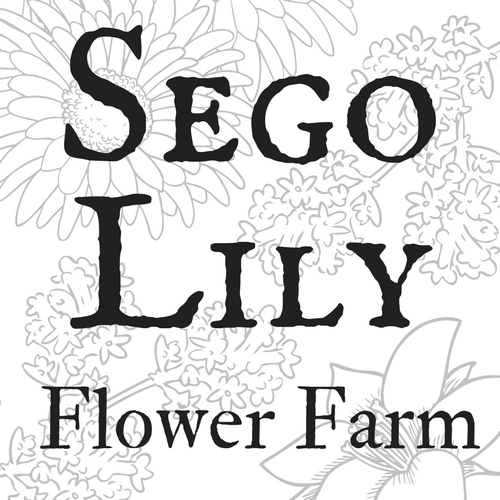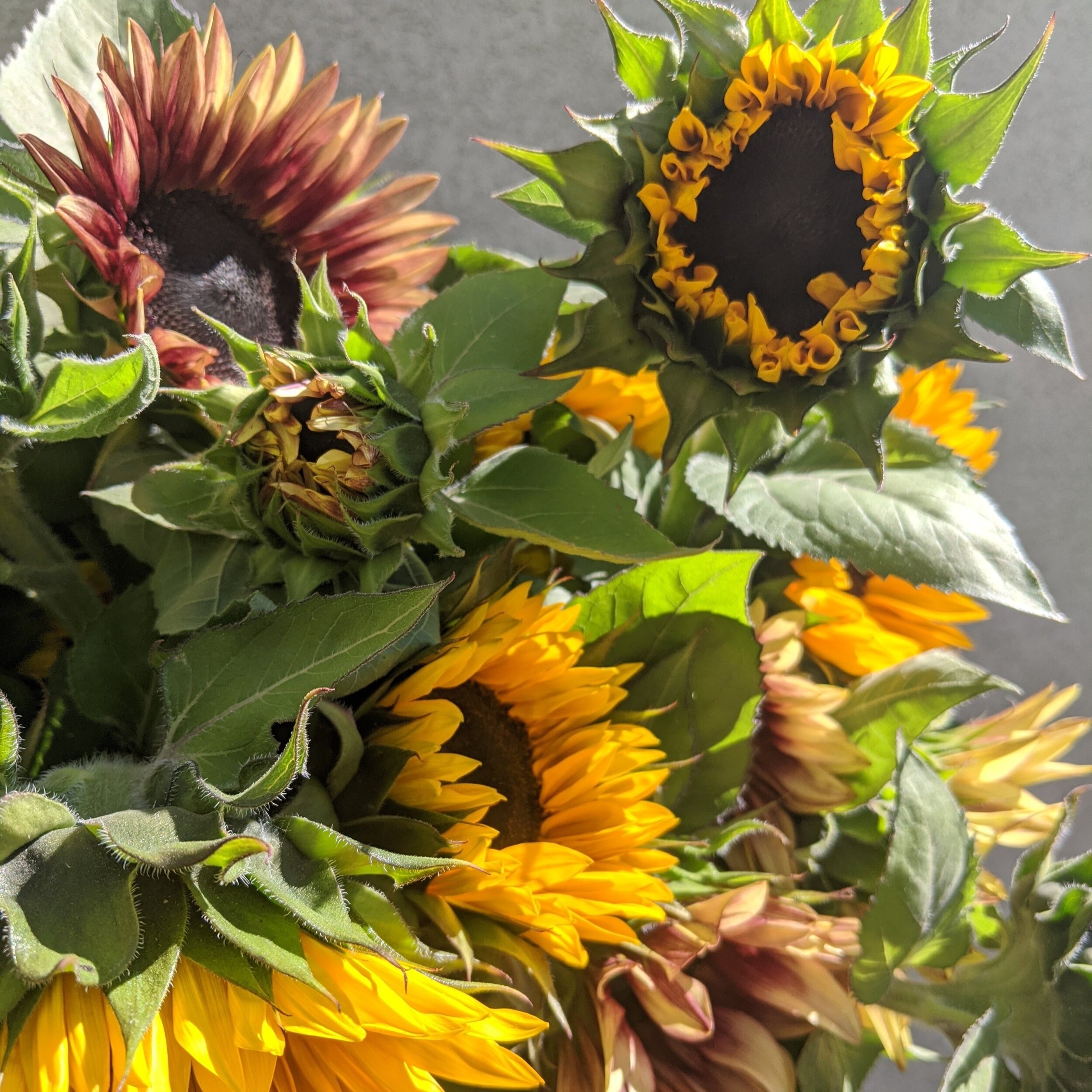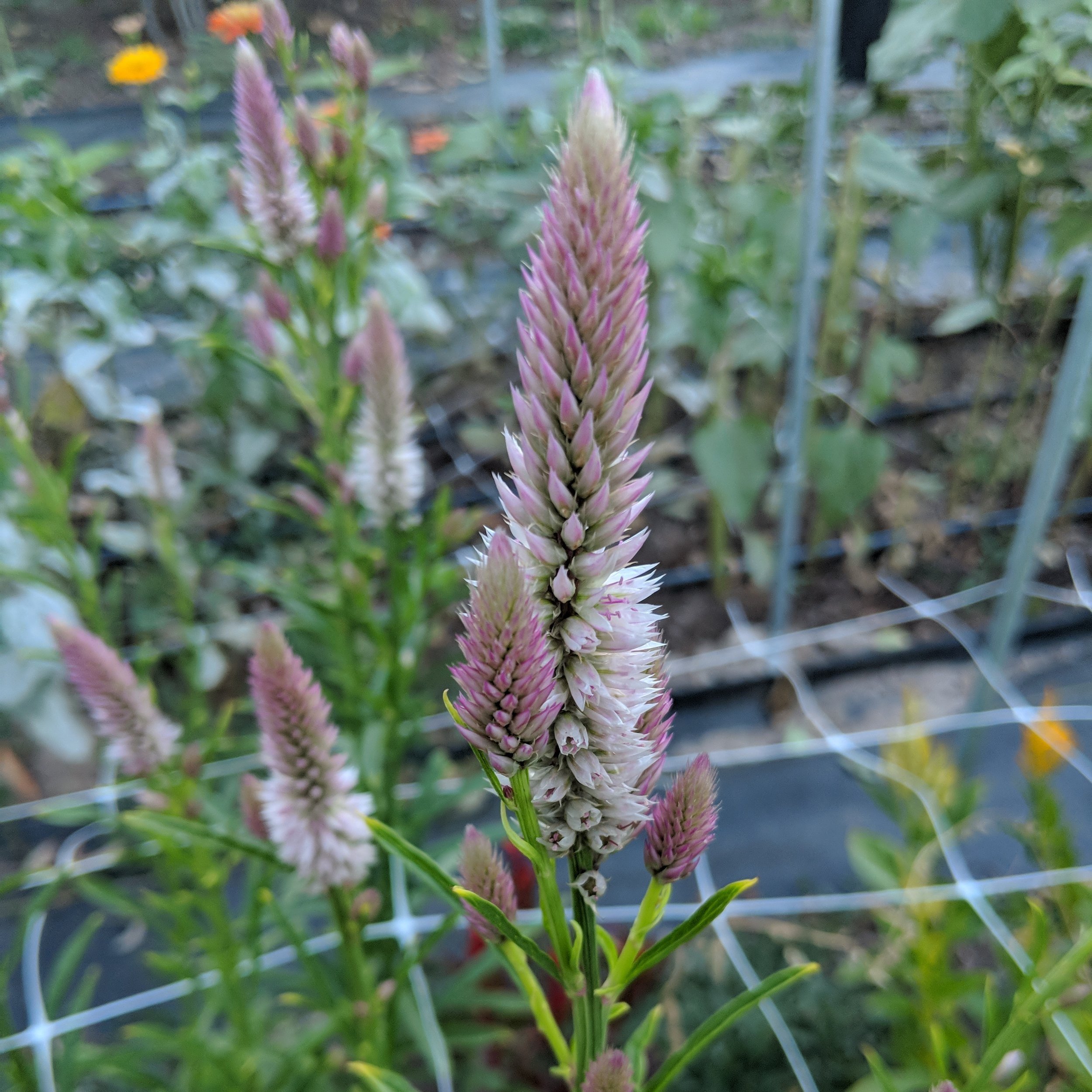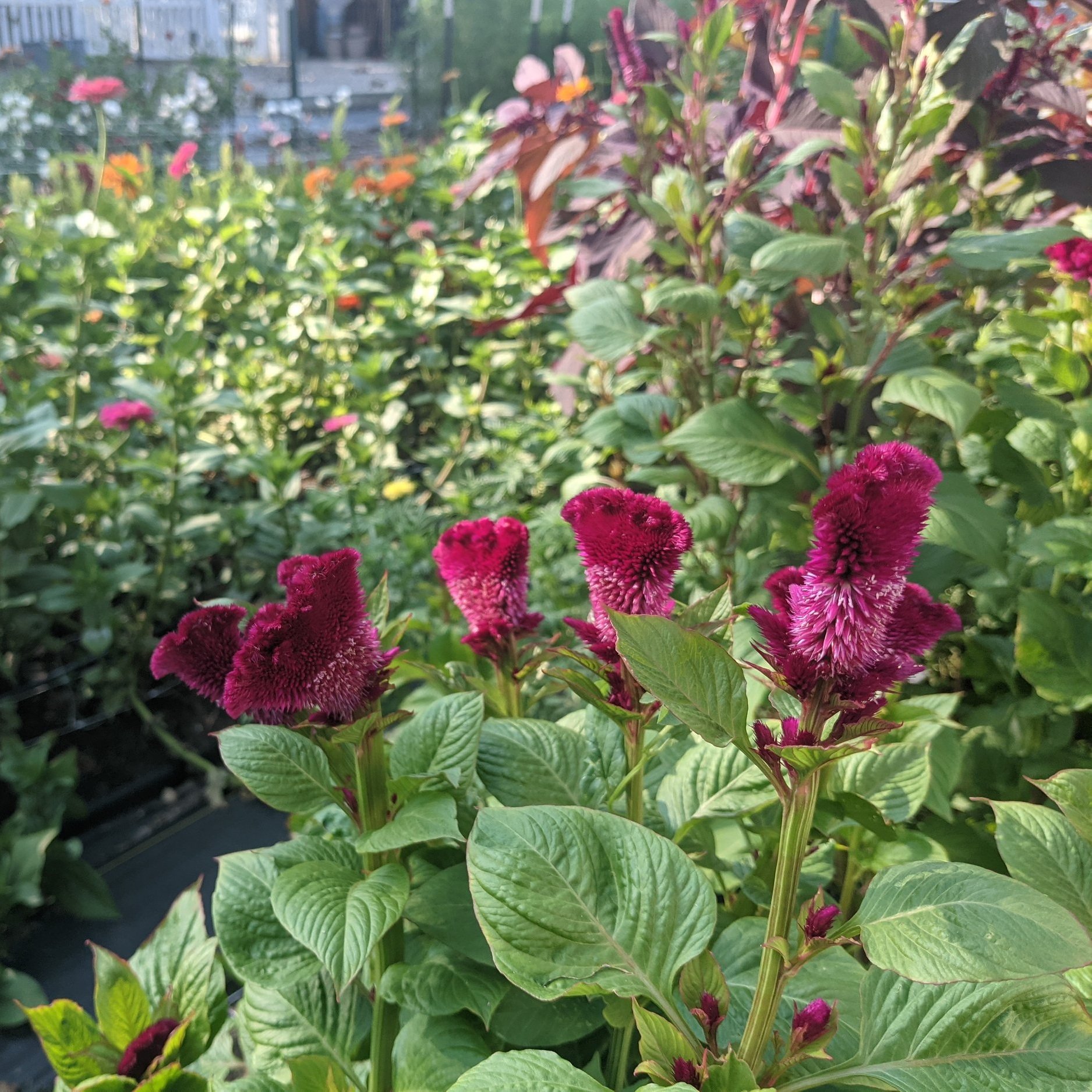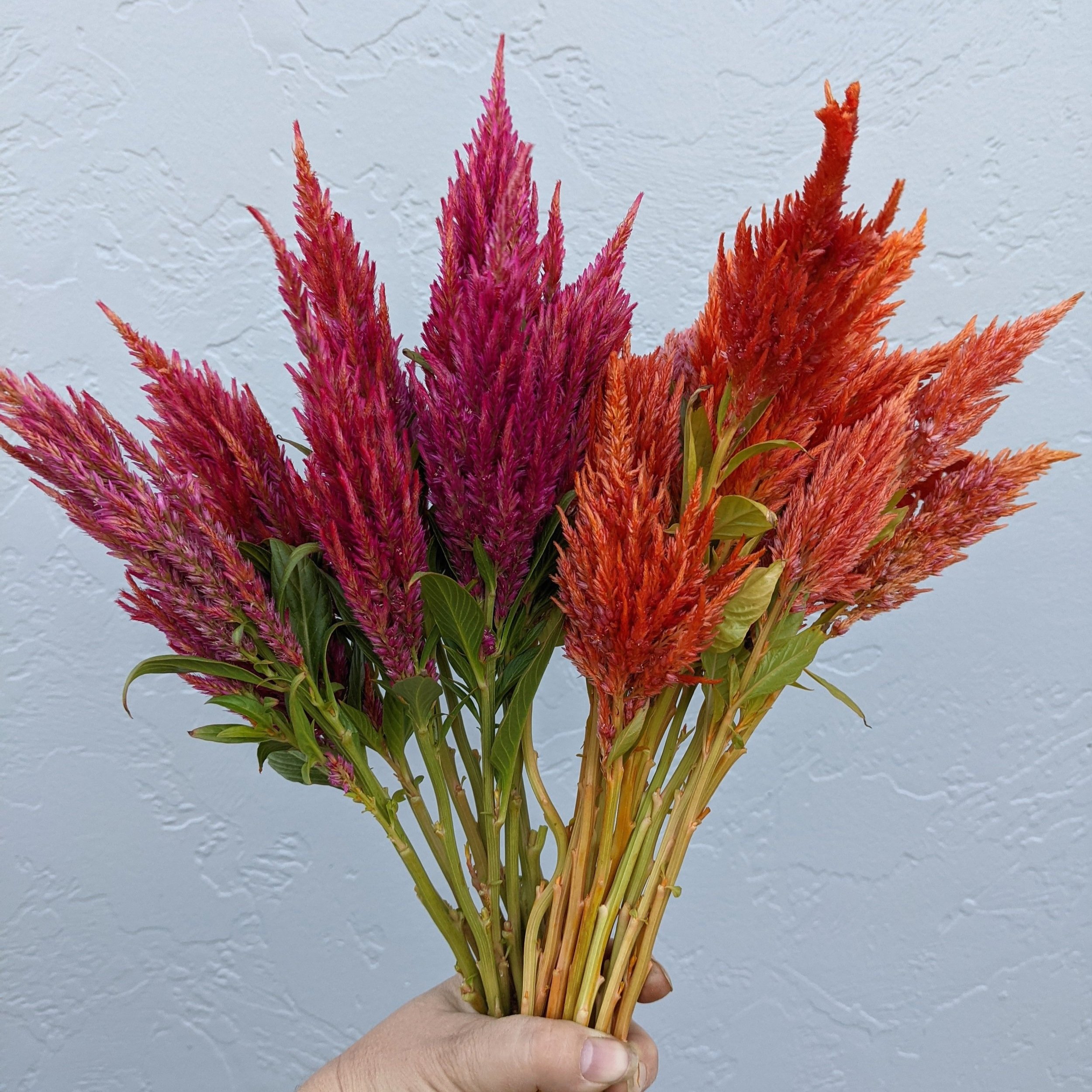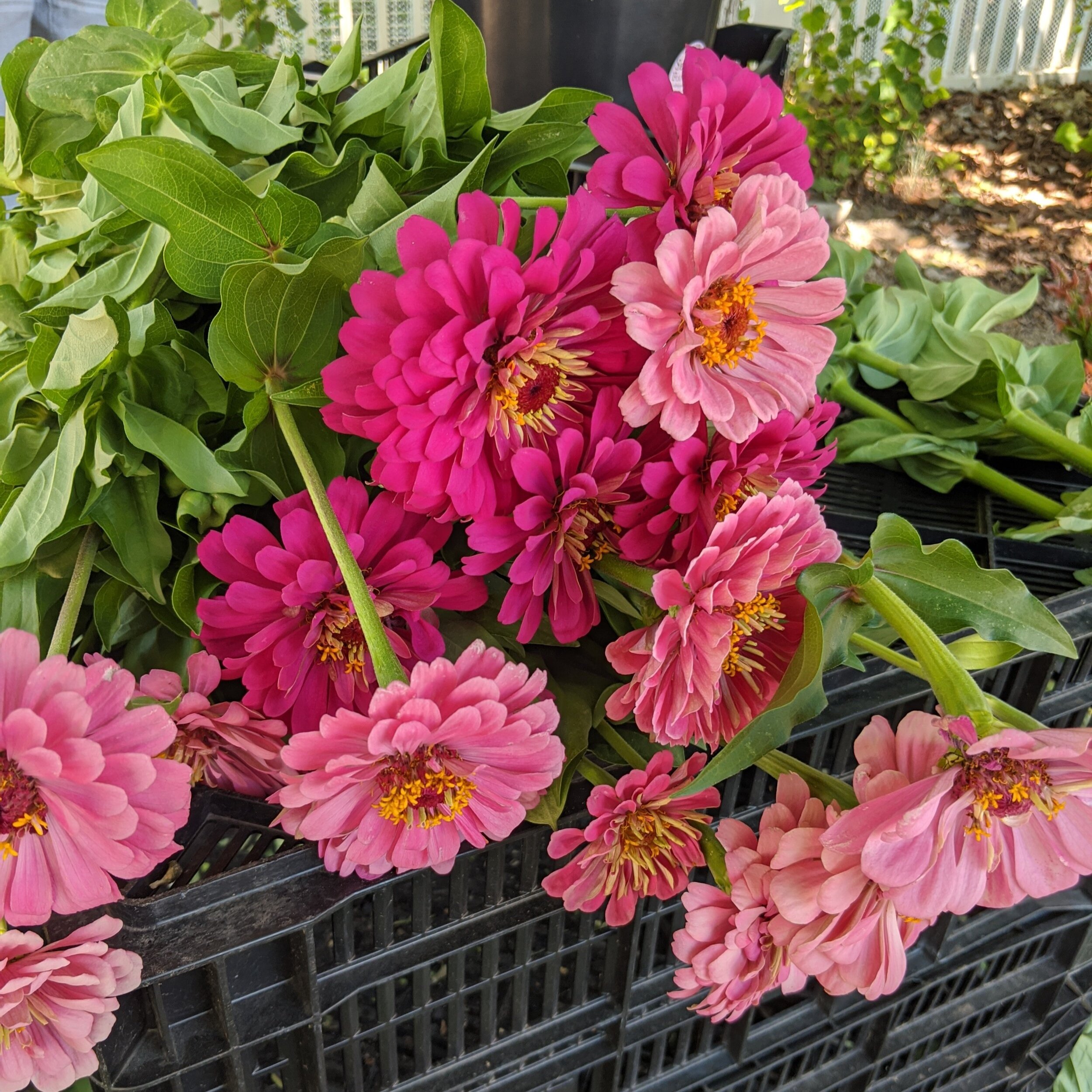Last January I had the chance to present at the Utah Farm and Food Conference. As we wrapped up our session someone asked for a list of the ten flowers I would grow if I were starting a farm or cutting garden for the first time. What a fun question! I love variety and grow way too many types of flowers on our farm, so it was challenging to narrow it down to just 10. You can check out my recomendations for cool season varieties here and my favorite starter perennials here.
Today I wanted to share my favorite warm season flowers for first time cut flower growers. Warm season flowers are those that grow during the frost free days of the year. Plant them after any threat of frost has passed in your area. Here in the Salt Lake valley we plant these varieties around Mother’s day, with another succession (second planting) about a month later.
Sunflowers. These classic summer flowers are so happy and cheerful and easy to grow! Place a seed about an inch deep in the soil, gently cover, water it in and wait. Sunflowers are also one of the fastest crops we grow, usually taking about 50-70 days to bloom depending on the variety.
Top Tips-
Sunflower size can be controlled by how far apart you plant your seeds. I plant mine about 4-6 inches apart in a grid for perfect bouquet sized blooms
Look for varieties that are “pollenless” or “pollen free”, these are bred for cut flowers and won’t make a mess on your table cloth, or your customers table cloth if you are growing for others.
My favorite selections are Vincent’s Choice, Procut Plum, and Procut White Nite
If you choose a branching type, make sure to give them a little more space, about 12 inches, and pinch them when they are 6-12 inches tall.
Cut just as the first petal begins to lift off the center disk for longest vase life.
From left to right: Sunflowers Procut Plum and Vincent’s Choice, Procut Plum sunflower at correct harvest stage.
Cosmos. If you are interested in the wildflower look, these sweet flowers are for you. Simple to grow, they can be planted directly in the ground or started inside. Cosmos come mostly in white and various shades of pink, although there are a handful of apricot, and citrus colored varieties.
Top tips-
Pinch them when they are about 6-12 inches tall
Cut them when the largest bud is just begining to open, the other buds will soon open as well. Make your cut deep into the plant, so that later stems will be long.
You can use the foliage as greenery in your bouquets!
Cosmos are kind like zucchini, super productive and quick to get past their ideal stage. Plant less than you think you need for your first go round.
Cosmos are very prone to powdery mildew. Its always the first plant to get it on my farm. Be prepared to treat it if powdery mildew is a problem in your garden.
I love the varieties Double Click and Sea Shell for their uniqueness.
Double click cosmos at stage of harvest
Basil. I know, I know, you must be thinking “But that’s an herb, not a cut flower!” Basil makes a fabulous and easy to grow foliage for your bouquets. It’s quick growing and loves the heat. And you can eat the left overs!!
Top Tips-
Choose your varieties carefully. Smaller leafed and tall cultivars work best. My favorites to grow are Mrs. Burn’s Lemon, Cinnamon, and Siam Queen Thai Basils.
Unlike growing basils for flavoring food, we want to let the basil bloom. Harvest when the basil is tall enough and a few of the florets have begun to bloom.
Basil can sometime be a little wilty. Harvest in the cool of the morning or later evening. Let it sit overnight in bucket, in a cool (not too cold) room. This will allow it to fill it’s cell walls with water and resist wilting. Stripping lower leaves off the stem will also help the remaining leaves hydrate better.
Fall bouquets featuring the dark and heavenly scented florets of Siam Queen Basil.
Celosia. This last season was the season of celosia on our farm. It was so lush and beautiful. Celosia comes in a vast array of shapes, textures, and colors. It’s a unique group of flowers that can stand up against our heat filled summers here in Utah.
Top Tips-
Get to know your celosias. There are crested celosia, a.k.a. cockscomb celosia or celosia cristata. Their texture is fun and velvety, the shape they grow in reminds me of ocean coral. Wheat celosia or celosia spicata bears narrow spikes of color that resembles, you guessed it, wheat. Celosia plumosa sends up feathery plumes of tiny florets.
Both plumed and wheat celosia are great upright linear additions to bouquets and arrangements. Crested celosia adds a fun texture and a talking point. For Wheat type my pick is Flamingo Feather. The plumed varieties of the Sunday series, especially Orange and Dark Pink, are winners, as is Sylphid, an icy lemonade yellow that blends with both brights and pastels. For crested varieties, I love Cramer’s Burgundy and the Chief series, specifically rose and persimmon.
Celosia is best started indoors on a heat mat. Besides needing to be started indoors, celosia is a very easy crop to grow. I have not seen any pests or diseases on celosia on our farm.
Pinch celosia when it is about 6-8 inches tall for consistently sized stems. Pinching is especially important for crested varieties that will bloom on multiple stems. Do not pinch any varieties that has “single stem” in it’s description, you’ll pinch off it’s one bloom.
Celosia will bloom in less than ideal circumstances, but for best blooms give it full sun and consistant water.
Harvest when the blooms have reached the size you desire but before the seeds ripen.
From left to right, Celosia Flamingo Feather, Celosia Cramer’s Burgundy, Celosia Sunday Dark Pink and Orange.
Zinnia. You might have been able to guess which flower would be the last of our top five, zinnias are a no-brainer for any cut flower garden. Big, bright, and beautiful, they are easy to grow from seed and bloom over a long season.
Top Tips-
Zinnias can be started directly in the ground outside or indoors to get a little head start.
Zinnias cannot be shipped, making them a flower unique to locally grown markets.
Harvest when flowers have fully opened and the stem right below the flower head has become firm. Do the wiggle test- gently grasp the stem 8-10 down from the bloom and give slight shake, if the flower stem is stiff all the way to the top it is ready to cut.
Cut deep, especially your first cut on a plant. I cut down to the bottom 3 or 4 branches on the plant. This will insure nice long stems for future harvests. Trim off any foliage or side buds for longest vase life.
Watch for powdery mildew, treating it sooner than later can protect your crop for the long haul.
Be careful with herbicides, zinnia are super sensitive to herbicide drift. Even a neighbor spraying weeds from 20 feet away can affect them.
Varieties to try - Any of the Benary’s giants, my favorite colors are the salmon rose, deep red, orange, and bright pink. Uproar Rose is disease resistant and super productive, the blooms are always large and uniform. The Queen series can be a fun novelty.
From left to right, Uproar rose and Benary’s Giant Bright Pink, Benary’s Giant Salmon Rose, Zinnia leaves affected by herbicide drift.
There you go, my top five warm season varieties to start your cutting garden with. Which will you try this year?
